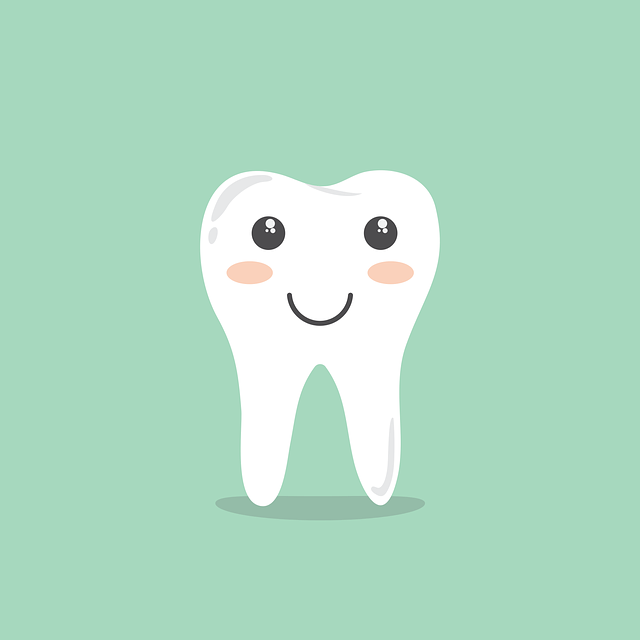Effective Gap Closure with Orthodontic Retainers
Orthodontic retainers, the unsung heroes of smile transformations, play a crucial role in achieving that perfect set of pearly whites. Designed to close gaps and maintain the alignment of teeth, these unassuming devices quietly work their magic behind the scenes. Over the years, orthodontic technology has advanced by leaps and bounds, making gap closure more effective and efficient than ever before. In this article, we will delve into the world of orthodontic retainers, uncovering the secrets behind their effectiveness in closing gaps and providing you with the knowledge you need to confidently embrace your journey towards a flawless smile. So, let’s embark on this enlightening adventure, where we explore the fascinating realm of gap closure with orthodontic retainers.
1. Understanding the Role of Orthodontic Retainers in Achieving Effective Gap Closure
Orthodontic retainers play a crucial role in achieving effective gap closure after orthodontic treatment. These appliances are designed to maintain the newly achieved alignment of teeth, preventing them from shifting back to their original positions. Understanding the significance of orthodontic retainers is essential for patients as well as orthodontic professionals.
Here are some key points to consider when it comes to the role of orthodontic retainers in gap closure:
- Preventing relapse: After braces or other orthodontic appliances are removed, there is a risk of teeth relapsing and moving back to their pre-treatment positions. Orthodontic retainers help counteract this movement by holding the teeth in their new positions, allowing the surrounding bone and tissues to adapt to the changes.
- Stabilizing teeth: Retainers not only prevent relapse but also stabilize teeth. By wearing retainers as prescribed, patients can ensure that their teeth remain in their corrected positions for the long term. This stability is crucial for achieving a lasting and aesthetically pleasing result.
- Correcting minor shifts: In some cases, minor shifts may occur even after the initial orthodontic treatment. Retainers can help address these shifts by exerting gentle pressure on the teeth, guiding them back into their desired positions. Regular use of retainers can correct these minor changes and maintain the desired alignment.
By understanding the role of orthodontic retainers, patients can appreciate the importance of wearing them as instructed by their orthodontist. Consistent and proper use of retainers is key to achieving effective gap closure and maintaining a beautiful, healthy smile.

2. Key Factors Influencing Successful Gap Closure with Orthodontic Retainers
There are several key factors that play a crucial role in successfully closing gaps with orthodontic retainers. By understanding and addressing these factors, orthodontic professionals can enhance the effectiveness of treatment and achieve optimal results for their patients.
1. Consistent and proper retainer wear: The success of gap closure heavily relies on the patient’s commitment to wearing their retainers consistently and correctly. Retainers should be worn as instructed by the orthodontist, typically for a specified number of hours each day. Consistency is key to maintaining the necessary forces needed to move teeth and close gaps effectively. Patients should also be educated on proper retainer care and hygiene to ensure the longevity and effectiveness of the appliance.
2. Retainer design and fit: The design and fit of the orthodontic retainer are crucial factors in successful gap closure. A well-fitting retainer ensures that the necessary pressure is applied to the teeth to encourage movement and closing of gaps. Orthodontic professionals should carefully customize and adjust the retainer to fit each patient’s unique dental anatomy. Regular follow-up appointments should be scheduled to monitor the progress and make any necessary adjustments to the retainer to ensure optimal results.

3. Orthodontic Retainer Types: Choosing the Right Tool for Gap Closure
When it comes to closing gaps in your teeth, choosing the right orthodontic retainer type is crucial. With several options available, it’s important to understand the differences and benefits of each.
1. Hawley Retainers: These traditional retainers consist of a wire that wraps around the front teeth and is attached to an acrylic plate that rests against the roof of the mouth. Hawley retainers are adjustable, making them an excellent choice for closing gaps. They can be customized with different colors and designs to suit your preferences.
2. Essix Retainers: Also known as clear retainers, Essix retainers are made of a transparent plastic material. They are custom-made to fit snugly over your teeth, providing a discreet option for closing gaps. Essix retainers are removable and easy to clean, making them convenient for everyday use.

4. Step-by-Step Process: Achieving Optimal Gap Closure with Orthodontic Retainers
When it comes to achieving optimal gap closure with orthodontic retainers, following a step-by-step process is key. By diligently adhering to these steps, you can ensure the best possible results for your patients. Here’s a breakdown of the process:
- Evaluation: Start by evaluating the patient’s dental condition, including the size and location of the gap. This will help you determine the most suitable retainer type and treatment plan.
- Impressions: Take precise impressions of the patient’s teeth to create custom-made retainers. These impressions ensure a perfect fit and comfortable wear for the patient.
- Fabrication: Utilize advanced orthodontic technology to fabricate the retainers, ensuring the highest level of accuracy and quality. This step is crucial in achieving optimal gap closure.
Once the retainers are ready, instruct the patient on proper usage and maintenance. Emphasize the importance of wearing the retainers as directed to achieve the desired results. Regular check-ups and adjustments may be necessary throughout the treatment period to ensure the gap closure progresses smoothly. By following this step-by-step process and providing comprehensive care, you can help your patients achieve the optimal gap closure they desire.

5. Maintaining Results: Post-Treatment Care for Long-Term Gap Closure Success
Once your gap closure treatment is complete, it is crucial to follow a post-treatment care routine to ensure long-term success and maintain the desired results. Here are some essential steps to incorporate into your daily routine:
- Wear retainers: Your orthodontist will provide you with retainers to wear after the gap closure treatment. Retainers help keep your teeth in their new positions and prevent any relapse. Make sure to wear your retainers as instructed by your orthodontist to maintain the achieved results.
- Maintain good oral hygiene: Continue to brush your teeth at least twice a day and floss daily. Proper oral hygiene is essential for overall dental health and will help prevent any issues that could impact the success of your gap closure treatment.
- Attend follow-up appointments: Regularly visit your orthodontist for follow-up appointments. These appointments allow your orthodontist to monitor the progress of your treatment and make any necessary adjustments. Following your orthodontist’s guidance is crucial for maintaining the results of your gap closure treatment.
Additionally, it is important to be mindful of certain habits or activities that could negatively affect the longevity of your gap closure results. These include:
- Nail-biting or pen-chewing: Avoid biting your nails or chewing on pens, as these habits can put pressure on your teeth and potentially undo the progress made during the gap closure treatment.
- Teeth grinding: If you have a habit of grinding your teeth, known as bruxism, it is essential to address this issue with your orthodontist. Teeth grinding can cause teeth to shift, which may impact the success of your gap closure treatment.
6. Addressing Challenges: Troubleshooting Gap Closure with Orthodontic Retainers
When it comes to closing gaps with orthodontic retainers, there can sometimes be challenges that arise along the way. However, with the right troubleshooting techniques, these challenges can be effectively addressed. Here are some common issues that may occur during the gap closure process and how to troubleshoot them:
- Insufficient pressure: If you notice that the gap is not closing as expected, it could be due to insufficient pressure being applied by the retainer. In this case, it is recommended to consult with your orthodontist to ensure that the retainer is properly fitted and adjusted to provide the necessary pressure to close the gap.
- Retainer discomfort: It is not uncommon to experience some discomfort when wearing orthodontic retainers, especially during the initial period of adjustment. However, if the discomfort persists or becomes unbearable, it may indicate an issue with the retainer. To troubleshoot this, check if the retainer is damaged or if there are any sharp edges that may be causing irritation. If necessary, schedule a visit with your orthodontist to address the issue.
- Lack of progress: In some cases, the gap closure progress may seem to plateau or stall. This can be frustrating, but it is important to remember that each individual’s orthodontic treatment is unique and may require varying amounts of time. To troubleshoot this, consult with your orthodontist to determine if any adjustments need to be made to the treatment plan or if additional measures, such as using elastic bands, are necessary to encourage further progress.
Remember, troubleshooting these challenges with orthodontic retainers is a normal part of the treatment process. By addressing these issues promptly, you can ensure that your gap closure journey is as smooth and successful as possible.
7. Expert Tips and Advice for Maximizing Gap Closure Effectiveness with Orthodontic Retainers
When it comes to maximizing gap closure effectiveness with orthodontic retainers, there are several expert tips and advice that can greatly help in achieving the desired results. These tips have been proven to be effective and can make a significant difference in the success of your orthodontic treatment. Here are some key recommendations to consider:
- Consistency is key: It is crucial to wear your orthodontic retainers consistently as prescribed by your orthodontist. This means wearing them for the recommended amount of time each day, which is typically around 20-22 hours. Consistency plays a vital role in ensuring that your teeth continue to move in the desired direction and that the gap closure process is effective.
- Follow proper hygiene practices: Maintaining good oral hygiene is essential for the success of your orthodontic treatment. Make sure to clean your retainers daily using a non-abrasive toothpaste and a soft-bristled toothbrush. Additionally, it is important to keep your teeth and gums clean by brushing and flossing regularly. This will help prevent any plaque buildup or gum inflammation that can hinder the effectiveness of your retainers in closing the gap.
Frequently Asked Questions
Q: What are orthodontic retainers and how do they work?
A: Orthodontic retainers are dental devices used to maintain the alignment of teeth following orthodontic treatment. They work by holding the teeth in their corrected positions, preventing them from shifting back to their original misaligned state.
Q: How effective are orthodontic retainers in closing gaps between teeth?
A: Orthodontic retainers can be very effective in closing small to moderate gaps between teeth. They apply a gentle, continuous force on the teeth, gradually bringing them closer together over time.
Q: Can orthodontic retainers close larger gaps between teeth?
A: While orthodontic retainers are primarily designed for maintaining tooth alignment, they may have limited effectiveness in closing larger gaps between teeth. In such cases, alternative orthodontic treatments, such as braces or clear aligners, may be more suitable.
Q: How long does it take for orthodontic retainers to close gaps between teeth?
A: The time required to close gaps with orthodontic retainers varies depending on the individual case. Generally, it can take several months to a year before noticeable results are achieved. Consistent and proper wear of the retainers is crucial for optimal effectiveness.
Q: Do orthodontic retainers cause discomfort?
A: Initially, some people may experience mild discomfort or soreness when wearing orthodontic retainers. However, this discomfort typically subsides within a few days as the mouth adjusts to the presence of the retainers. If persistent discomfort occurs, it is important to consult an orthodontist.
Q: Are there different types of orthodontic retainers available?
A: Yes, there are different types of orthodontic retainers available, including traditional removable retainers made of acrylic and wire, as well as clear retainers that are virtually invisible when worn. The choice of retainer type depends on individual preferences and the recommendation of the orthodontist.
Q: How should orthodontic retainers be taken care of?
A: Orthodontic retainers should be cleaned daily using a toothbrush and non-abrasive toothpaste. They should be stored in a protective case when not in use to prevent damage or loss. Regular check-ups with an orthodontist are also necessary to ensure the retainers are functioning properly.
Q: Can orthodontic retainers be worn only at night?
A: Depending on the specific case, orthodontic retainers may need to be worn full-time initially, including during daytime. As the desired results are achieved, the wearing schedule may be reduced to wearing the retainers only at night. It is important to follow the orthodontist’s instructions regarding wearing duration.
Q: Are orthodontic retainers a permanent solution?
A: Orthodontic retainers are not considered a permanent solution. Once the desired alignment is achieved, a retainer will still need to be worn for an extended period to prevent teeth from shifting back. Gradually, the wearing schedule may be reduced, but some form of retainer wear may be necessary long-term.
Q: Can orthodontic retainers be used to close gaps in adults?
A: Yes, orthodontic retainers can be used to close gaps in adults, as long as the gaps are within the range that retainers can effectively close. It is important to consult with an orthodontist to determine the most appropriate treatment option for individual cases.
In Summary
In conclusion, effective gap closure with orthodontic retainers is a proven and reliable method for achieving optimal dental alignment. By following the prescribed treatment plan and wearing the retainers as directed, individuals can successfully close gaps between their teeth and achieve a beautiful, straight smile.
Key takeaways from this article include:
1. Orthodontic retainers are an effective tool for closing gaps between teeth. They provide the necessary pressure and support to gradually move teeth into their desired position.
2. Consistency is key when it comes to wearing retainers. Following the recommended wear schedule and wearing them for the prescribed amount of time each day is crucial for successful gap closure.
3. It is important to clean and maintain your retainers properly to ensure their effectiveness. Regularly cleaning them and storing them in their designated case will help prevent bacteria buildup and extend their lifespan.
4. Regular check-ups with your orthodontist are essential throughout the gap closure process. They will monitor your progress, make any necessary adjustments, and provide guidance to ensure the best possible outcome.
By understanding the benefits of orthodontic retainers and following the recommended guidelines, individuals can confidently embark on their journey to close gaps and achieve a confident, radiant smile.





